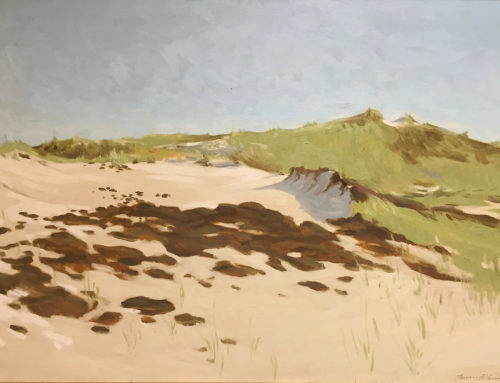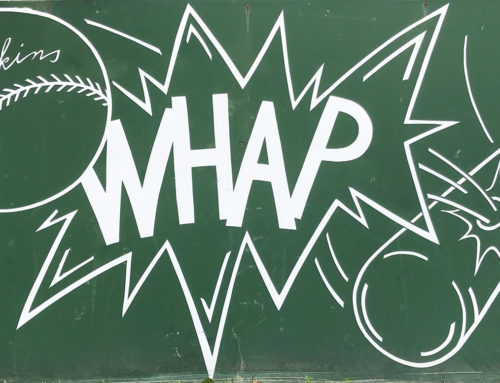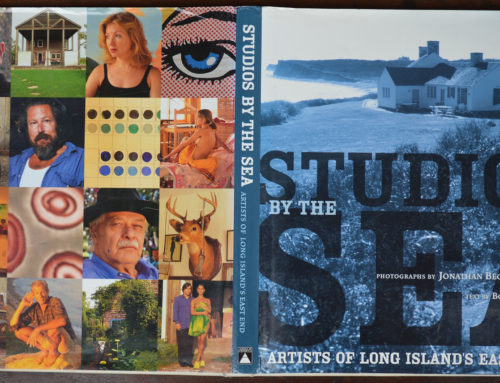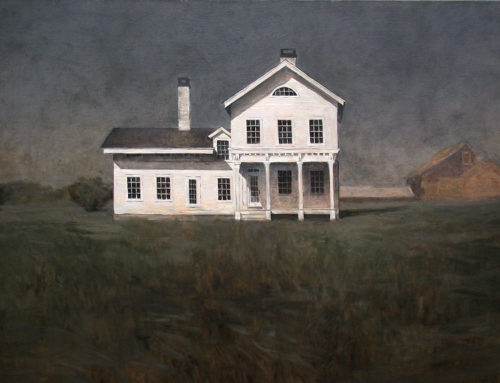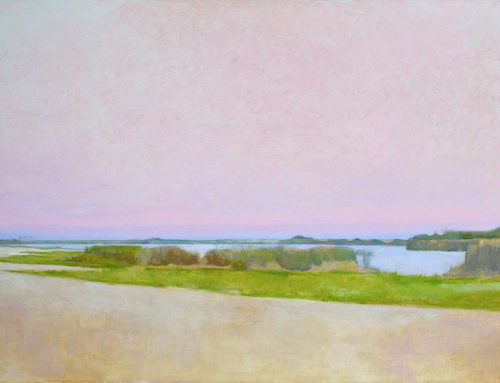
Caswell Cliffs, oil on linen, 3’x11′
Working outside is kind of like therapy for me. I can escape from everything about the day or the world that bothers me, at least for a little while. Sometimes painting is really just an excuse for being there, at a place, in the moment. Montauk is especially that way. It’s a 25 mile drive from my studio to Montauk Point thru sometimes slow moving traffic, crazy people on the highway, people not paying attention, tailgating or going to damn slow, some that only drive on the weekends and forget about paying attention. I don’t mean to harp, I was an EMT for ten years. I saw a lot of ugly car accidents, too many, up close and personal, because people weren’t paying attention. I could a blog about that by itself, change the names to protect the stupid. Once I’m there I take a deep breath and relax. I made it. I find a place to park that’s fairly close to where I want to go, unload my gear and hump it down to the beach to find a tranquil spot on or under the bluffs. I’m not likely to see many people. Thank God! There’s no noise except for the surf, no errands to run or calls to make, sometimes there’s no cell reception, no cars going by, no garden to tend to, no @georgie-brown-dog bugging’ me to throw the ball and I don’t wear a watch ever, certainly not when I’m working. It can be challenging to get down there to work. It helps to know somebody and even then just getting down to the beach and up again can mean a lot of vertical climbing. After the effort it’s imperative to stay a while. I can’t forget anything like food, water, bug spray, a hat or jacket or I’m SOL. It’s a short stay and a long drive home if I’m missing something important. One day I didn’t bring a palette knife. I improvised and used brushes. Another time I’d forgotten to bring white paint. One time I forgot my palette. Still, once I’m there it’s for one reason only, to paint, most of the time that is.

Nodule collection
I usually go right to work but many times I’ve set up to paint and then wander around for hours exploring. One of the things I look for are sedimentary nodules. They form over tens of thousands of years and fall out of the bluffs as they erode. I found them 1″ to 6″ in width. Some refer to the hematite nodules as Indian paint pots because of their hollowed out bowl shape and they’re found in many places around the East End. The others I’ve labeled Sedimentary nodules because I really don’t know what else to call them. They’re almost ilminite but not as dense and without the defined crystals. They’re somewhat fragile in that once they fall into the surf from the erosion they don’t last long getting washed about between surf and harder rocks. The bluff are composed of varying types and color of soil filled with rocks and boulders, some of the same types of aggregate found hundreds of miles away in Vermont. They were moved here as the Wisconsinan glacier pushed over the Northeast 85,000 years ago. Imagine a mountain range of ice thousands of feet high and hundreds of miles long pushing it’s way south picking up anything in it’s path. A river of ice so massive that it sheered the rock away from mountains and pushed that rock along in it’s movement. As the glacier rolled along in slow motion it pushed and tumbled these jagged boulders into smaller pieces and rounded their edges into smoother shaped boulders, The glacier also picked up softer minerals or more organic debris like wood that might have contributed to the formation of these nodules. Over time the center of the nodule decomposed leaving a hollowed space in the center. I found one with a charcoal like soot inside. How did it get there? It could have occurred from an ancient forest fire before the glacier arrived and gathered up the debris on its course. This is just my own theory, I’m not a geologist. I didn’t do well in science either when I was in school. But from what I’ve read about how Long Island was formed I’m willing to accept a challenge on this. The glacier began to retreat around 20-15,000 years ago. It had reached it’s southernmost position where Long Island lies today. As the glacier melted and receded the rocks and boulders it had gathered fell into place or were already pressed into the soil from the glaciers slow forward movement. These stones are present all along the bluffs, on the beach and in the surf, setting up underwater reefs, making for some world class surf. Like Montauk the same topography can be found on Block Island or Martha’s Vineyard for the same reason. Also Long Island and the surrounding region are a relatively new geological formation on our planet. These islands all along the northeast coast didn’t exist until water from the melting glacier caused sea level to rise and form the islands.
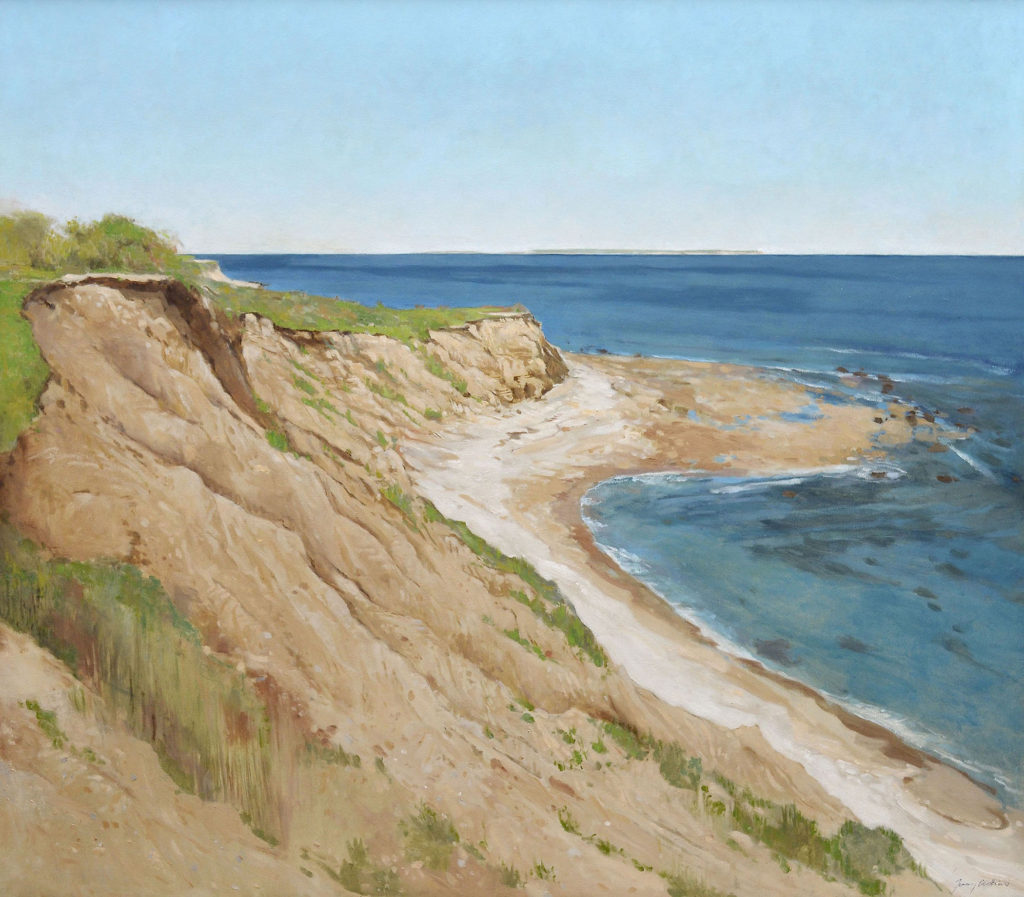
Camp Hero to Block Island, oil on canvas, 44″ x 50″, private collection
Standing above the bluffs is just as distracting and wandering around below. It’s hard not to get lost staring off to the horizon. The view is spectacular. One summer I found an easy way to the bluffs just east of Peter Beard’s. A very good friend let me park at their House. Peter lives in the last cottage on the bluffs before you cross into Camp Hero. Today Camp Hero is a 754 acre state park. It was originally a coastal defense station in WWII disguised as fishing village. Peter allowed me to cross his property and set up. I didn’t have to carry this 44″x50″ and the rest of my gear very far. It took several weeks to complete because I couldn’t work every day but when the time and weather allowed I was there. Beard is an interesting photographer and artist noted for his book The End of The Game, a documentation of the slaughter and demise of tens of thousands of elephants and other wildlife in Africa. He’s also a qualified New York aristocrat but exemplifies the artist side of himself, more involved in his work than aligning with the upper crust. He would show up in the late afternoon while I was painting, barefoot, cocktail in hand and give me some encouraging words to keep working. One day Peter asked if I would like to see one of his works in progress. I was honored. In the cottage, spread out on his living room floor was a very large photograph from his Africa series with elements of collage, pieces of other photos, diary like notes written on the photograph in blood and india ink, found objects arranged compositionally and what looked like dozens of other parts of the puzzle laying around the floor, on a table, the sofa and the rest of the furniture. You couldn’t sit down without disrupting some part of what was going on. Peter would literally sit on the floor in the middle of this piece rearranging the parts, absorbed in the process until he had things right. I was surprised and amazed to see how he worked. The piece on the floor was the most important thing in the house and everything else around seemed like it was there to support the creative process going on at the center of things. The rest of the house inside and out had other works in progress. Which is, I believe how most other artists work but with Peter I couldn’t tell where work ended and domestic life began. His life revolved around work, a true artist. I found out that he had collaborated with some legendary artist like Andy Warhol, Andrew Wyeth, Francis Bacon, Truman Capote, Salvador Dali and others. I felt a little humbled being there and truly amazed with his process and output of work. I did realize, here was this well known and interesting figure in the art world who was, in a very important yet unassuming way, helping me.
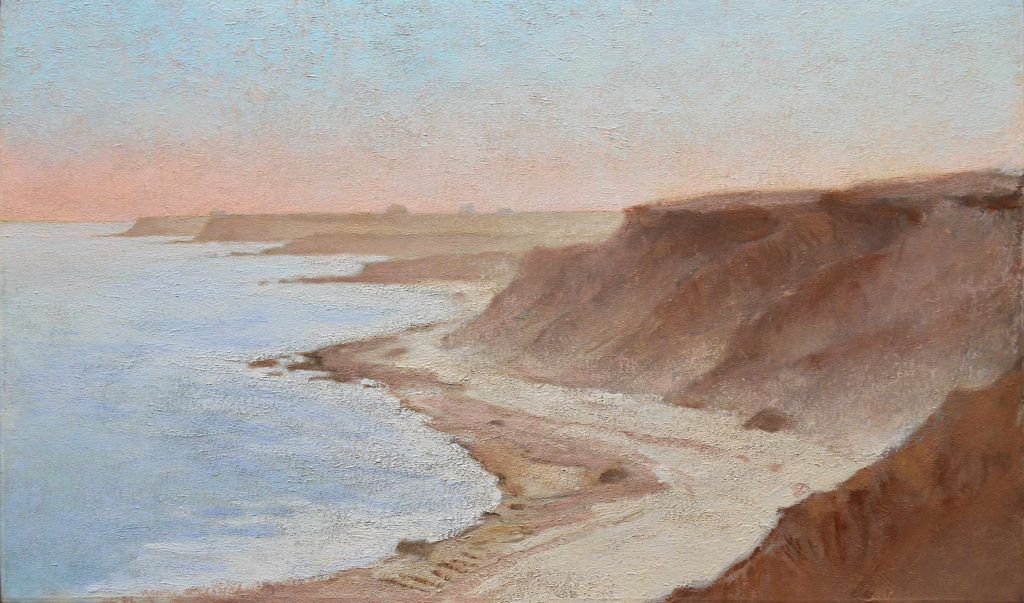
Balcombe Greene’s Last View, oil on canvas, 26″x44″
Montauk always draws me back, year after year. There are so many places to paint. Everywhere I turn I’m inspired. I’ve tried to work as many spots as I can find on or below the bluffs. Balcombe Greene’s Last View was painted on the bluffs where the late artist who died in 1990, lived and worked in Montauk. I was standing in front of Balcombe’s studio. I’d be given permission to paint there by the current owner. From the bluffs you can see several Stanford White homes in the distance and Andy Warhol’s summer home, a former fishing camp, is on that 4th point from the horizon. I’ve been back a few times to work here. It’s a habit to go back to the same place over and over to paint because it’s easy and I’m a little lazy that way. I don’t have to think about a piece I’ve already done over and over in my head. Sometimes I just want to do another painting there because the last one sold and I want another one for myself. I get sentimentally attached to my work that way. But honestly I loose that feeling when I’ve deposited the check. Sometimes I just want to catch a different light and time of day.
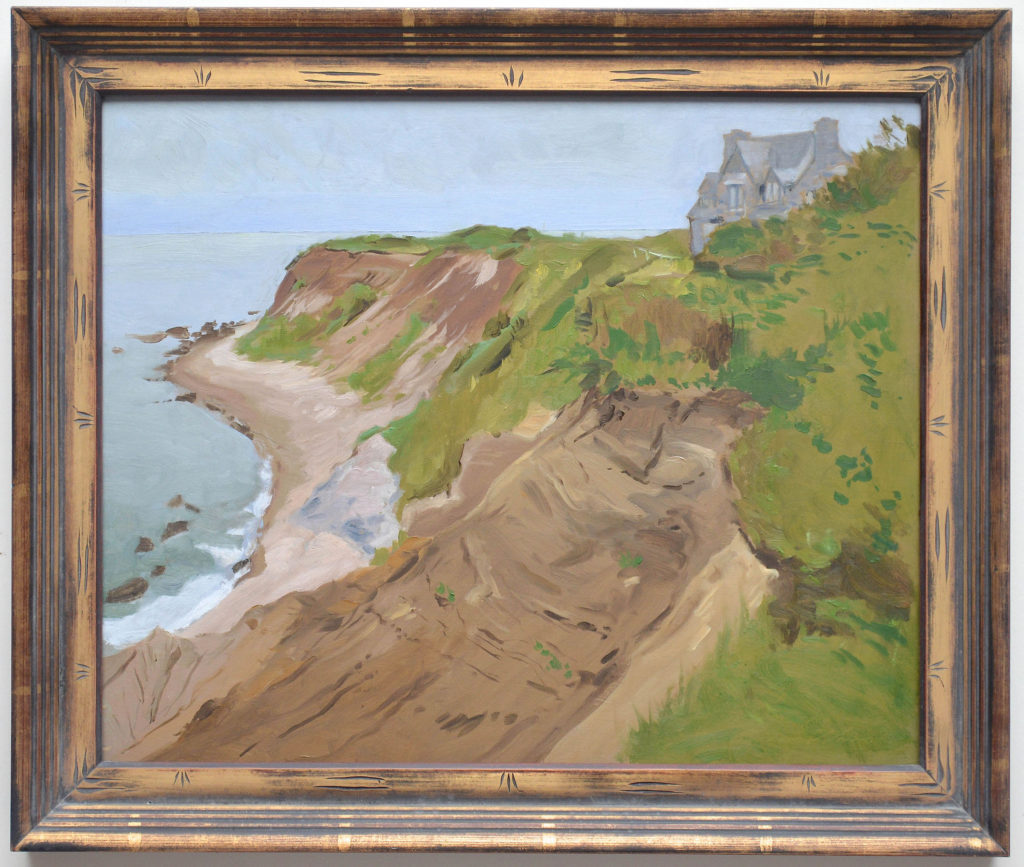
Stone House, oil on wood panel, 13″x16″, private collection
One fall I did an artist in residence for the Nature Conservancy at the Warhol Preserve. The NC granted me access to the place via a long dirt road and park by the house which is right on the beach on a low bluff. You can still get down to the beach on a trail off the highway. Parking is free and provided by the Conservancy. Donations to the NC are always appreciated. The trail is almost a mile long and tick infested but the walk is worth it. The dirt road has a guard now and the house is private property. Two summers ago I was able to go back and paint there again. Looking west from the beach you see two points. I worked here for a few weeks in mid summer and never saw anyone after I got off the highway and made my way to a parking area.
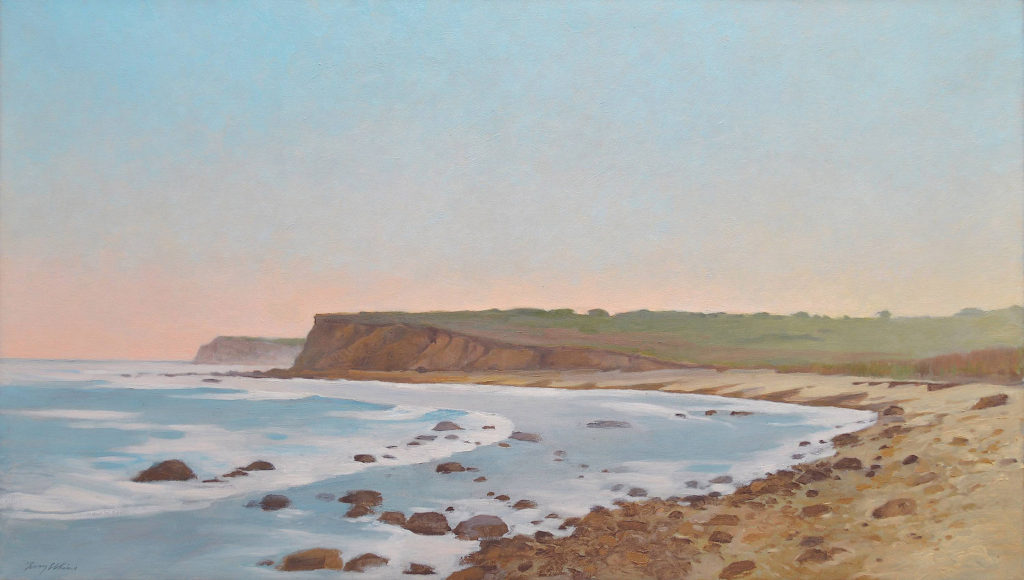
Caswell Cliffs, oil on canvas, 32″x56″
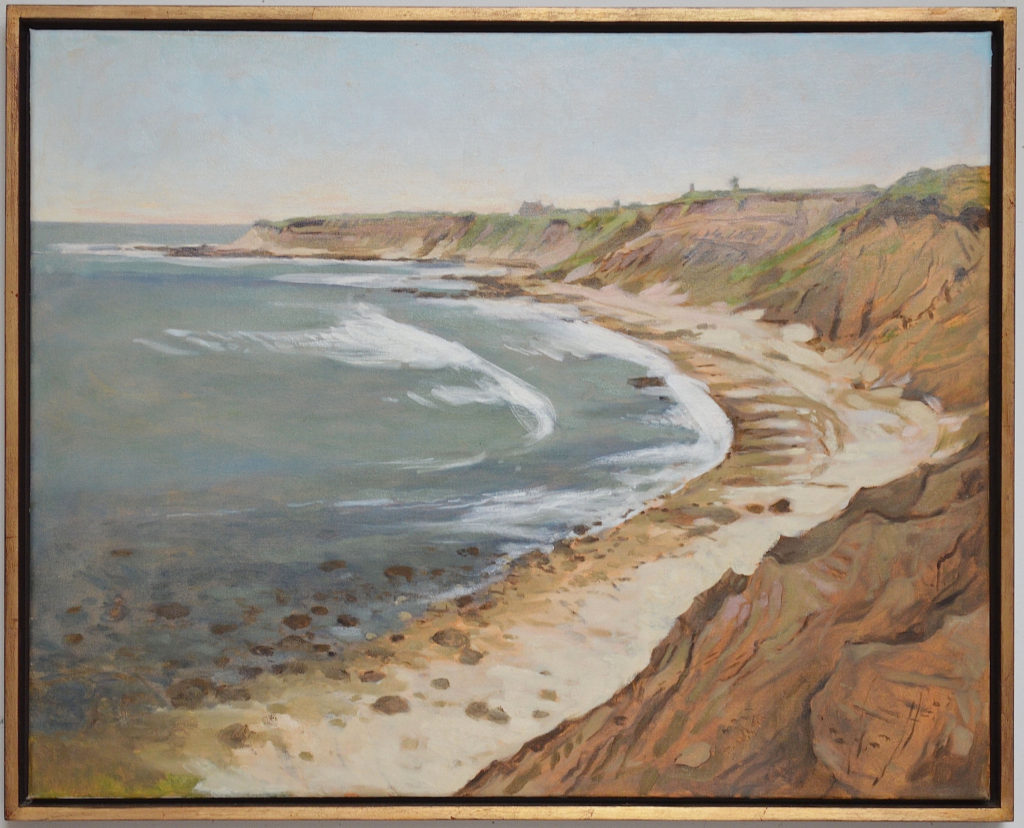
Driftwood Cove, oil on canvas, 24″x30, private collection
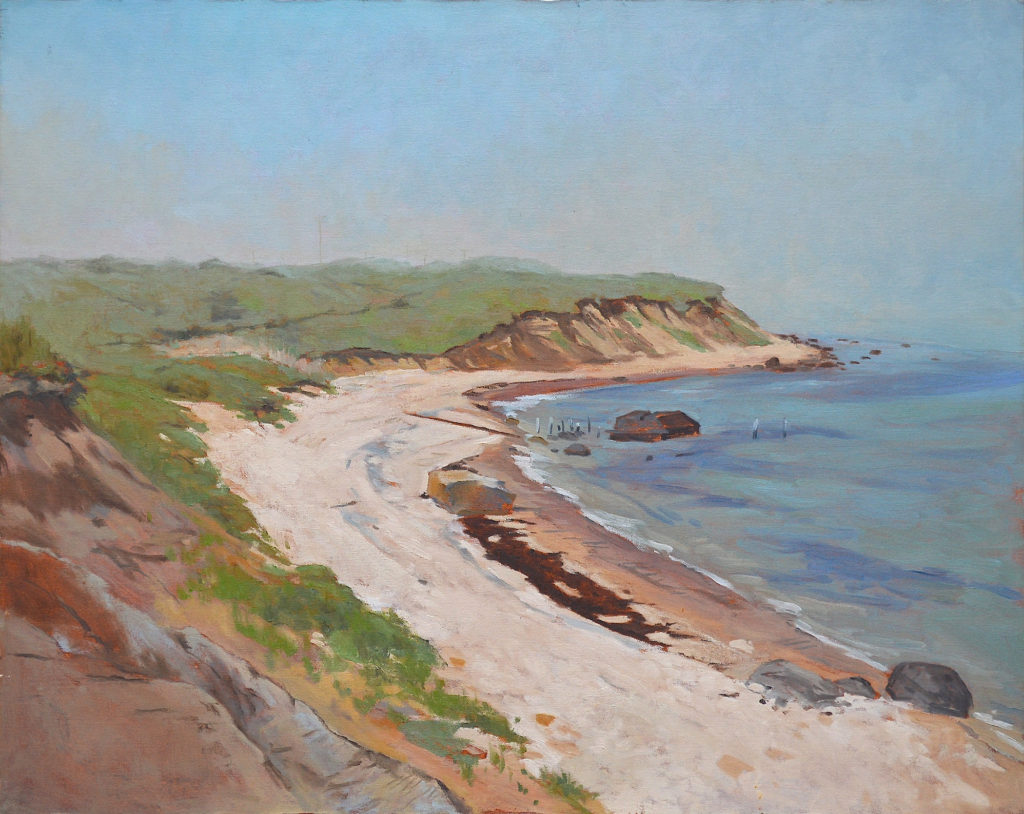
Camp Hero, oil on canvas, 24″x30
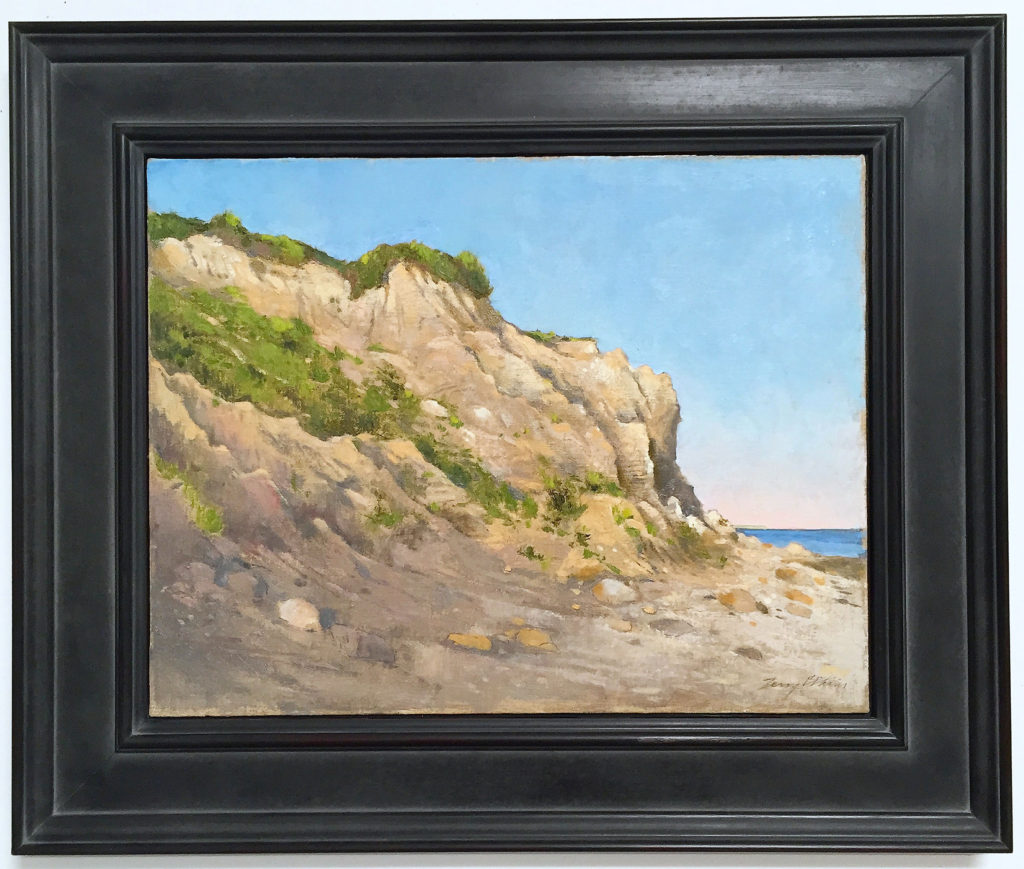
Old Montauk, oil on linen, 16″x20″, private collection
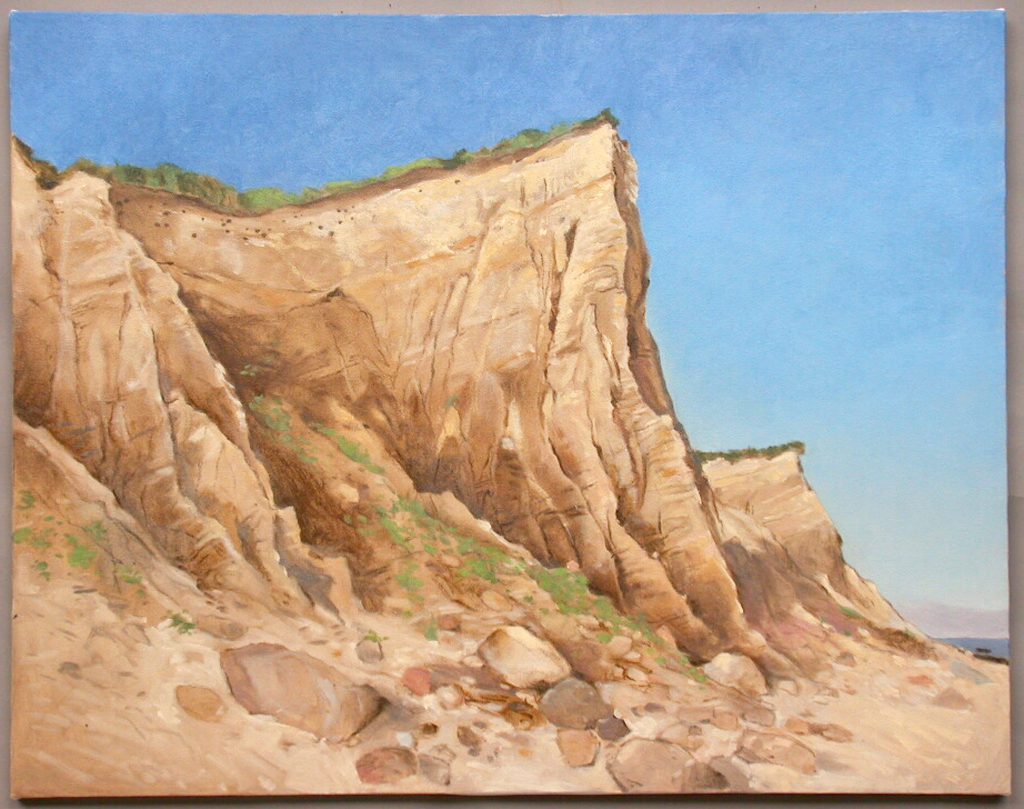
Balcombe’s Bluff, oil on canvas, 24″x30″, private collection
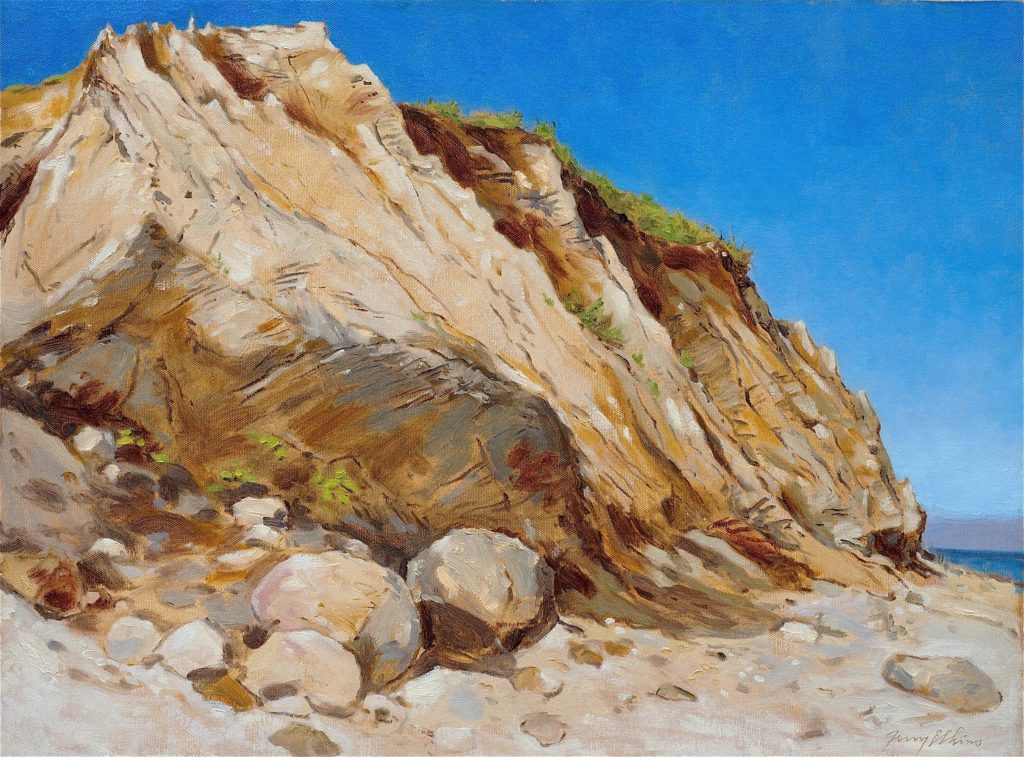
Bluffs, Camp Hero, oil on linen, 16″x20″, private collection


